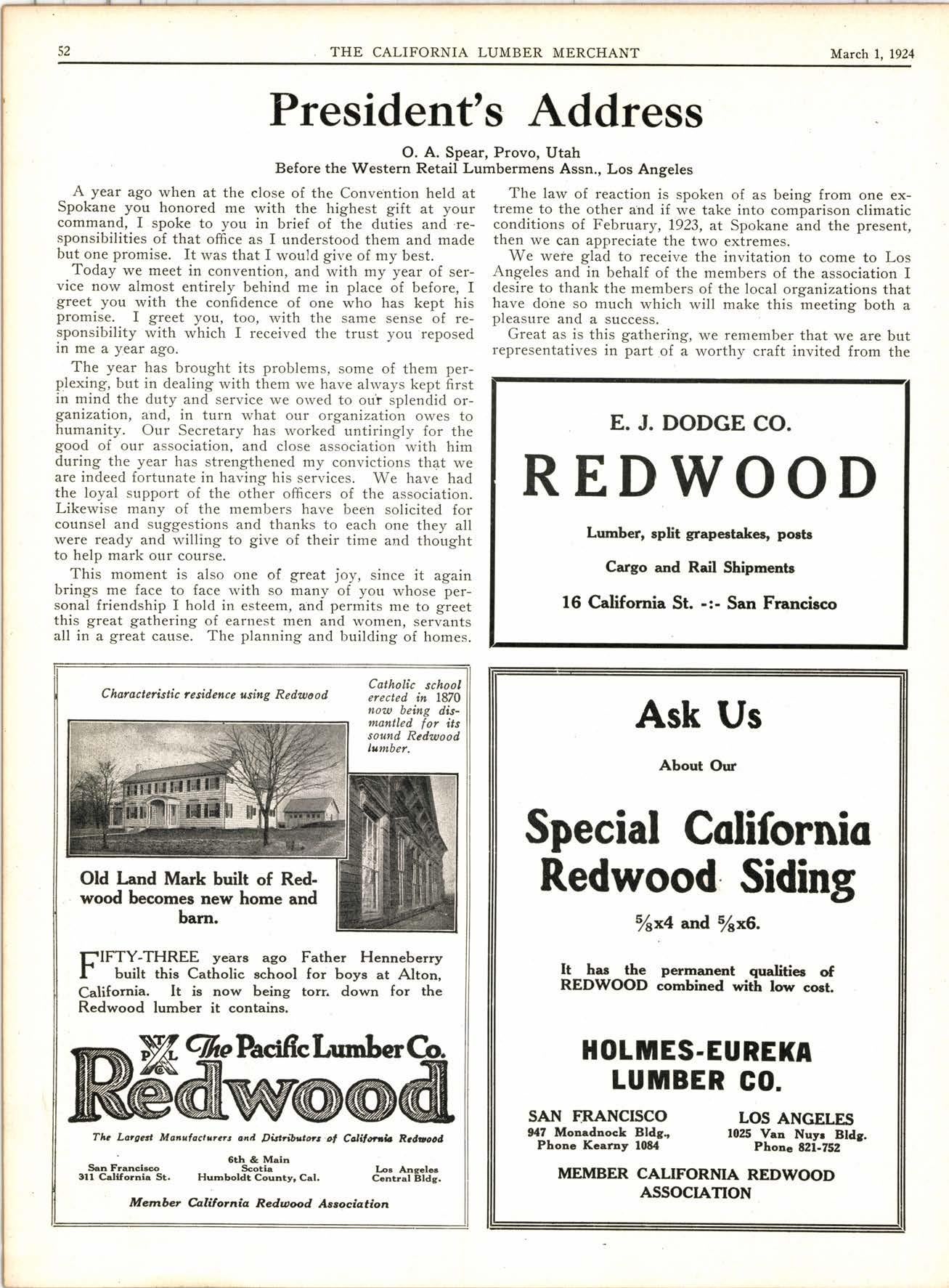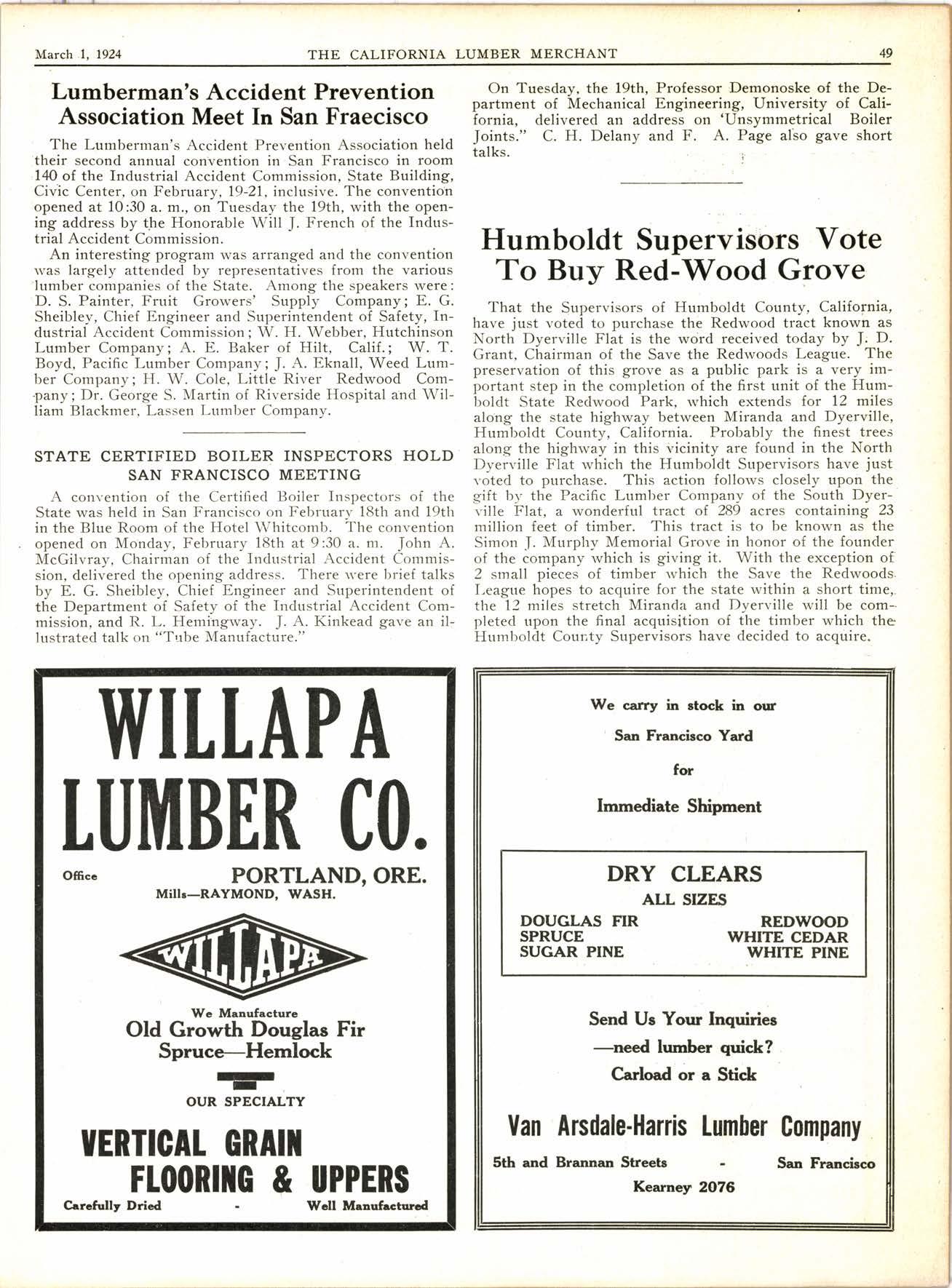
2 minute read
Los Angeles, Build Your City Permanently!-Says New York
C. B. Molesphini, real estate editor of the New York American, who is generally recognized as the leading newspaper authority on real estate in the American metropolis, has written the following letter to the real estate editor of the Los Angeles Examiner:
I read in the issue of Sunday, February 10, that H. S. McKee tells your readers: "Los Angeles will build within the next ten or fifteen years another city such as Los Angeles is today."
In another column there is an answer by Jack Dionne to the quiz: "The whole world is asking about Los Angeles: how long will it last?"-meaning its Aladdinlike expansion and growth.
The first mentiohed comment on Los Angeles stresses the second, By Dionne, who says:
"There will be at least 15,000,000 people, in a continuous city for about 140 miles. Every foot of land is being grabbed in that great distance. Home additions spring up in a week, are completely sold out before the public'opening' takes place, ini many cases, ahd they move on to the next one."
From a cross-continent distance, may I offer a suggestion to the makers of this future city of 15,000,000 inhabitants, that its buildiings be of the character that will not require scrapping, as we have the habit in Manhattan, before the arrival of that wonder city, which, carrying on as indicated and predicated, will outdistance the much-vaunted Greater New York.
The speculator in real estate naturally is most interested in getting in and out of real estate, leaving "George" do the physical work of the actual development, the "George" in this instance meahing the general public.
Let the directors of the construction, architects, builders, building commissioners and other city authorities, guideeven if the guiding hand is drastic-in an orderly manner the type and character of construation. It may seem to those affected by regulation that guidance is interference with the growth of Los Angeles, but let me submit the gaps in Manhattan, which are cluttered with buildings as obsolete today as the horse-drawn vehicle.
These sections, so found today, are such as they are because the landholders refused to recognize opportunityl ahd sent it away rather than for any other cause. A section grows orderly even when there is no scientific direction of its growth. It springs and thrives just like "Topsy" until it encounters preventatives, like obqtinate owners who refuse to sell at a f.air figure, or by ill-advised building construction.
Old estates, -tenaciously held, were the retarders of the northward spread of the wholesale dry goods district in Manhattan. Refusal or inability to grasp the necessity for modern buildings was the other potent cause.
The same cadses occasioned the jumping of the Fourteenth street district beyond Twenty-third street and the re-establishment of the silk and white goods industry salesrooms along Fourth and Madison avenues above Twentythird street.
Los Angeles is now born great and new. Some of the big men in the game of real estate as New York knows it, like Frederick Brown, who thinks nothing of a $20,000,000 realty turirover in a year; David 'W. Keen, rvho built more than a thousand dwelling houses in the past three years and Elisha Sniffin, who does a terrific lot of financing of construction by producing the loahs for it, have recently visited California, and Los Angeles in particular.










